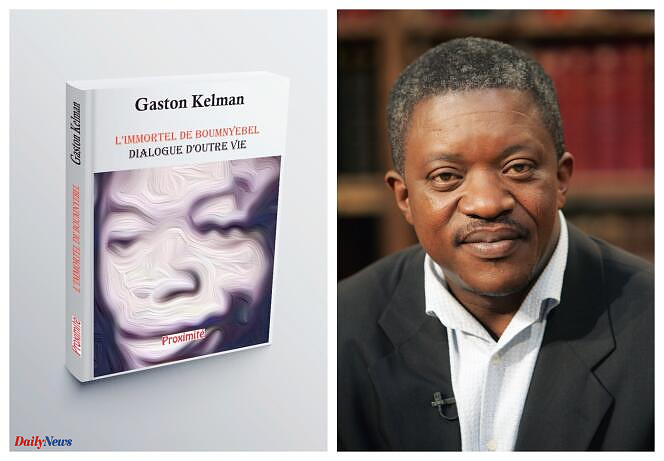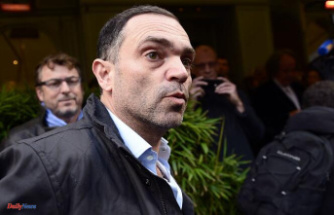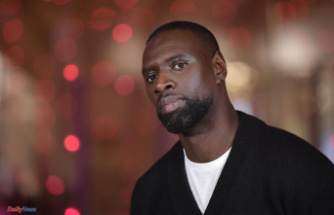How can we bridge the distance between official memory and collective memory when institutional silence dilutes historical events that are proven and known to all into oblivion? In response to this question – and for the case of Cameroon – the writer Gaston Kelman offers a theatrical work, L'Immortel de Boumnyebel, Dialogue d'outre vie, dedicated to the great leader of the struggle for independence: Ruben Um Nyobé (1913-1958).
We will first note this "beyond life" - and not "beyond the grave" - which is in question in connection with the one who, after months of peaceful struggle at first, then armed, was killed by the French colonial power near from the locality of Boumnyebel. With this subtitle, the issue of the text is announced: it will be less a question of drawing the biography of Um Nyobé than of reflecting on the mark he left among the Cameroonian population, as well as the inspiration that his activism still arouses in the current context, more than sixty-five years after his death.
We will also note the idea contained in the cover graphics - admittedly quite unfortunate - of the work, representation of a disfigured face, like that of Um Nyobé after her body had been dragged on the ground for kilometers by his murderers, who wanted to symbolically mark the annihilation of his image.
Grandiloquence
By the grace of theatrical fiction, the “Mpodol” (“spokesperson”, in Bassa language) therefore returns from the dead, as a ghost character haunting the collective consciousness. It is first announced by a reciting narrator, who paints his portrait: “This man, Um was his name, son of Nyobé […] / He used all peaceful recourses / He traced the trail of the stars in clandestinity / Until the approaching advent of the great evening […] / Ruben Um Nyobé, the Mpodol for his people / And for all the children of his emerging country / He will be the legend for endless centuries. » With such verses with the grandiloquence of a griot, Gaston Kelman immediately attributes a heroic aura to Um Nyobé.
Because the point here is to recall the bravery of the man who went from a former trade unionist loving justice and peace to the leader of a vast community of anti-colonial resistance fighters. Um Nyobé and her peers believed that after the help given to Europe to free itself from Nazi Germany, Africa could in turn claim emancipation, in other words independence. “What have I asked for that is not due to us, that is not legitimate or even that is exaggerated? From the platform of the UN, in the press, in meetings, I asked for a right recognized by the UN: that of peoples to self-determination. »
Gaston Kelman's aim is to rehabilitate the distorted image of these "maquisards" designated by the colonial power as terrorists and to reestablish them in their status as heroes of a war of national liberation. During the five paintings that make up the piece, we move between the current era and that of the years of struggle. Different characters follow one another: a young journalist in dialogue with Um Nyobé, a pregnant woman whom the military forces want to push into betraying the leader, a Cameroonian prelate sent by the central power as a negotiator to make Um Nyobé give up the fight...
Rehabilitation
It is therefore, with this piece, about building bridges between the past and the present and allowing current generations to connect with these heroes, to restore their memory, to elevate them to the rank of references while they are absent from the history books in Cameroon. “In what I am going to tell you, everything will be memorial and not historical,” said the Mpodol to the young journalist. More than what I will tell, you will hear what you need to hear to build this dream, this imagination which serves as the basis for any construction of identity, for any nation, for any people, for any rebirth. I'll tell it to you. »
It will then remain for the readers or spectators of the play to take an additional step: to find how to act in their turn in the interest of all in order to build the future. “Each generation must find its mission,” writes the author, repeating the words of Frantz Fanon.
Known for his essays – such as the famous I am black and I don’t like manioc (2003) – Gaston Kelman makes with this text a contribution to the need for historical rehabilitation which is increasingly expressed in Africa. By choosing to publish it in Cameroon, as close as possible to the first public concerned, it joins the literary space opened in its time by Mongo Béti (Remember Ruben, 1974) and more recently by authors and creators like Hemley Boum (Les Maquisards, 2015) or, on the musical creation side, Blick Bassy with the album 1958. Thus, from work to work, the figures of Um Nyobé and her fellow resistance fighters are reconstructed. And historical knowledge is becoming more complex for the good of all.












